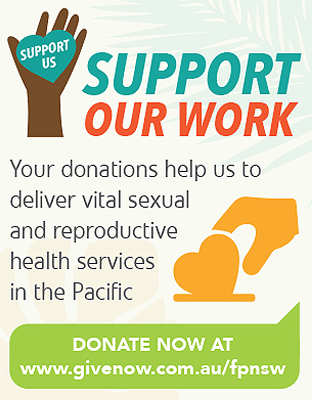Translating evidence into practice: Safety benefits shown for low dose ethinyl estradiol pills in a French national database study
Dr Deborah Bateson
Background
Uptake of the combined hormonal contraceptive pill has fallen slightly but still accounts for over 30% of contraceptive use in Australia. Pill choice is determined by a range of factors including side-effects such a break through bleeding, non-contraceptive benefits for the management of heavy menstrual bleeding and acne as well as cost per month. Our role as clinicians is to provide evidence-based information on the advantages and disadvantages including the risks of the various contraceptive options in a way that is easy to digest. The dose of ethinyl oestradiol (EE) has been decreasing over the decades since the pill was first introduced in 1961 with the lowest dose pills now containing 20mcg of EE. While previous evidence has pointed to a reduction in venous and arterial vascular risk for 20mcg EE pills a new French database study provides further evidence for an, albeit modest, safety benefit for 20mcg EE pills compared with those containing 30-40mcg EE.
What was the objective of the study?
The French study assesses the risk of pulmonary embolism (PE), ischaemic stroke and myocardial infarction (MI) associated with combined oral contraceptives according to dose of EE and progestogen.
How was the study carried out and what were the main outcome measures?
The study links information on reimbursements for oral contraceptives from the national health insurance database to data from the national hospital discharge database using an observational cohort design. It included almost 5 million women (4,945,088) living in France aged 15-49 years who had at least one reimbursement for an oral contraceptive and no previous hospital admission for cancer, PE, ischaemic stroke or MI between July 2010 and September 2012.
The main study outcome measures were the relative and absolute risks of a 1st PE, ischaemic stroke or MI.
What did the researchers find?
The study generated 5,443,916 women-years of oral contraceptive use with 3,253 events of interest being recorded:
- 1,800 pulmonary embolisms (33 per 100,000 women years)
- 1,046 ischaemic strokes (19 per 100,000 women years)
- 407 myocardial infarctions (7 per 100,000 women years)
After adjustment for the type of progestogen and for risk factors for these serious conditions including age, socioeconomic status, treated hypertension and diabetes, the relative risks for women using a 20 mcg EE pill vs a 30-40 mcg EE pill are as follows:
- 0.75 (95% CI 0.67 to 0.85) for pulmonary embolism
- 0.82 (0.70 to 0.96) for ischaemic stroke
- 0.56 (0.39 to 0.79) for myocardial infarction
The authors then adjusted for oestrogen dose as well as for vascular risk factors and found that desogestrel and gestodene (found in marvelon and minulet pills) were associated with statistically significantly higher relative risks for PE (2.16 (1.93 to 2.41) and 1.63 (1.34 to 1.97), respectively) compared with levonorgestrel. Pills with these progestogens were not associated with a higher risk of arterial thromboembolism than levonorgestrel pills.
Levonorgestrel combined with 20 mcg EE was associated with a statistically significantly lower risk than levonorgestrel with 30-40 mcg EE for each of the three serious events.
Strengths and limitations of the study
The very large size of the national study allowed for an assessment of extremely rare events but its observational nature means that causal associations cannot be established. As for all database studies it is limited by the information collected in the first place which in this case excluded smoking status (but included dispensing of nicotine replacement therapy since 2009). Because the proportion of women with diabetes or hypertension or those treated for smoking cessation was small (<2% each), these three factors were combined in a single composite indicator of "contraindication or need for precautions for use" of oral contraceptives. Finally, the study was also confined to pills that are reimbursed within the French national insurance scheme which does not, for instance, include drospirenone-containing pills.
Implications for practice
It is important to be aware that the absolute risk of these serious conditions is very low for women without additional risk factors and that the safety benefit found in this French study for 20mcg EE pills is therefore relatively modest. The baseline risk of venous thromboembolism (VTE) is around 2-4 per 10,000 women in a year while the risk of MI is less than 1 per million women aged less than 35 years. It is also important to be aware that pills with 20mcg EE are more likely to be associated with a loss of cycle control and an increased risk of break through bleeding which can lead to early discontinuation.
Current guidance advises considering a monophasic PBS-listed levonorgestrel pill containing 30 µg EE or less as a good first choice which now includes the option of a PBS-listed 20mcg EE pill. These pills are considered to have a low increase in risk of VTE, are a cost-effective option and have a similar acceptance rate to other combined hormonal methods. Other pills or the vaginal ring can be prescribed where there is a specific potential benefit to the woman or there are side-effects to first-line pills. While some women are able to find a 'best fit' pill immediately, others may require a trial of a few different types and of course don't forget to mention the benefits of LARC!
Reference:
Weill A. Dalichampt M et al. Low dose oestrogen combined oral contraception and risk of pulmonary embolism, stroke, and myocardial infarction in five million French women: cohort study
BMJ 2016;353:i2002


